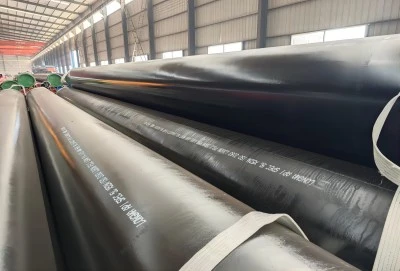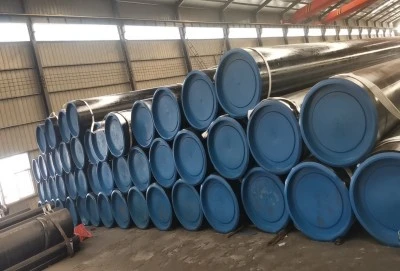The longevity and reliability of oil and gas transportation infrastructure heavily depend on the proper inspection and maintenance of api 5l psl2 pipes. These high-performance pipelines represent significant investments and play crucial roles in energy distribution systems worldwide. Understanding and implementing comprehensive inspection and maintenance protocols not only ensures operational safety but also maximizes the service life of these essential components. This guide explores the fundamental approaches to inspection and maintenance, providing practical insights for pipeline operators and maintenance professionals.
|
|
|
Regular Inspections:
The foundation of effective api 5l psl2 pipe maintenance lies in establishing and following a systematic inspection program. Regular inspections serve as an early warning system, allowing operators to identify potential issues before they develop into serious problems. The frequency of these inspections should align with operational conditions, environmental factors, and regulatory requirements, typically ranging from monthly checks to annual comprehensive evaluations.
External inspection protocols begin with thorough visual examinations of the pipeline surface and surrounding environment. Experienced inspectors assess the condition of protective coatings, looking for signs of deterioration, mechanical damage, or environmental impact. They pay particular attention to areas where soil conditions might promote corrosion or where external forces could affect pipeline integrity. These inspections often reveal early indicators of potential problems, such as coating disbondment, surface corrosion, or ground movement affecting pipeline support.
Internal api 5l psl2 pipe condition monitoring represents a more complex but equally crucial aspect of regular inspections. Modern inspection programs utilize sophisticated inline inspection tools that traverse the pipeline interior, collecting data about wall thickness, metal loss, and geometric deformations. These tools, often called "smart pigs," provide detailed information about the pipeline's internal condition, helping operators track corrosion rates and identify areas requiring attention.
Cathodic protection systems require regular monitoring to ensure continued effectiveness against external corrosion. Technicians measure pipe-to-soil potentials at designated test points, verify the proper operation of rectifier units, and assess the overall effectiveness of the corrosion protection system. These measurements, when properly tracked over time, provide valuable insights into the long-term effectiveness of corrosion control measures.
Specific Inspection Methods:
Advanced non-destructive testing methods form the backbone of modern api 5l psl2 pipe inspection programs. Ultrasonic testing stands out as a particularly versatile technique, capable of providing precise measurements of wall thickness and detecting various types of defects. Modern ultrasonic inspection systems utilize multiple transducers and sophisticated signal processing to create detailed maps of pipeline condition, enabling operators to track changes over time and identify areas requiring attention.
Magnetic flux leakage inspection has emerged as a powerful tool for detecting metal loss and other anomalies in pipeline walls. This technology works by magnetizing the pipe wall and detecting distortions in the magnetic field caused by wall thinning, pitting, or other defects. The resulting data helps operators understand the extent and severity of corrosion damage, enabling them to make informed decisions about maintenance and repair priorities.
Radiographic examination provides valuable insights into weld quality and internal pipeline conditions. Advanced digital radiography systems have largely replaced traditional film-based methods, offering faster inspection times and improved image quality. These systems prove particularly valuable for examining complex geometries, such as pipeline joints and repairs, where other inspection methods might prove less effective.
Eddy current testing complements other inspection methods by providing rapid assessment of surface and near-surface conditions. This technique proves especially useful for examining pipeline coatings and detecting surface-breaking defects. The non-contact nature of eddy current testing makes it particularly suitable for examining pipelines with complex geometries or restricted access.
Maintenance Practices:
Effective maintenance of api 5l psl2 pipes requires a comprehensive approach that combines preventive measures with timely corrective actions. Coating maintenance stands as a critical element in preventing external corrosion. Regular assessment of coating condition, combined with prompt repairs when damage is detected, helps maintain the pipeline's first line of defense against environmental factors. Modern coating systems, when properly maintained, can significantly extend pipeline service life and reduce the need for costly repairs.
Internal corrosion control demands a multi-faceted approach including chemical treatment, regular cleaning, and environmental monitoring. Pipeline operators must maintain proper chemical inhibitor programs, monitor water content and bacterial activity, and implement regular cleaning programs to prevent internal deterioration. These activities require careful coordination to ensure effectiveness while minimizing operational disruptions.
Mechanical damage repair procedures must follow established industry standards and best practices. When damage is detected, qualified personnel assess the severity and determine appropriate repair methods. Modern repair techniques range from simple coating repairs to full-section replacements, depending on the nature and extent of the damage. Documentation of all repair activities provides valuable information for future maintenance planning and regulatory compliance.
Pipeline cleaning operations play a vital role in maintaining operational efficiency and preventing internal corrosion. Regular pigging programs remove accumulated debris, water, and other contaminants that could promote corrosion or reduce flow efficiency. The selection of appropriate cleaning tools and frequencies depends on operating conditions, product characteristics, and observed contamination levels.
API 5L PSL2 Pipe Supplier:
Longma has established itself as a leading manufacturer of api 5l psl2 pipes, maintaining comprehensive certification credentials that demonstrate its commitment to quality and environmental responsibility. The company's manufacturing processes adhere to stringent international standards, as evidenced by its extensive certification portfolio including API 5L, ISO 9001, ISO 14001, FPC, and Environmental Quality System certifications.
Quality control at Longma encompasses every aspect of the manufacturing process, from raw material selection through final product testing. The company employs advanced testing equipment and qualified personnel to ensure that each pipe meets or exceeds applicable standards. This comprehensive approach to quality management helps ensure consistent product performance and reliability in service.
For organizations seeking reliable api 5l psl2 pipe manufacturers, Longma welcomes inquiries at info@longma-group.com. The company's technical team stands ready to assist customers with product selection, specification review, and application support. Their experience in manufacturing high-quality pipeline products provides valuable insights for customers facing challenging application requirements.














